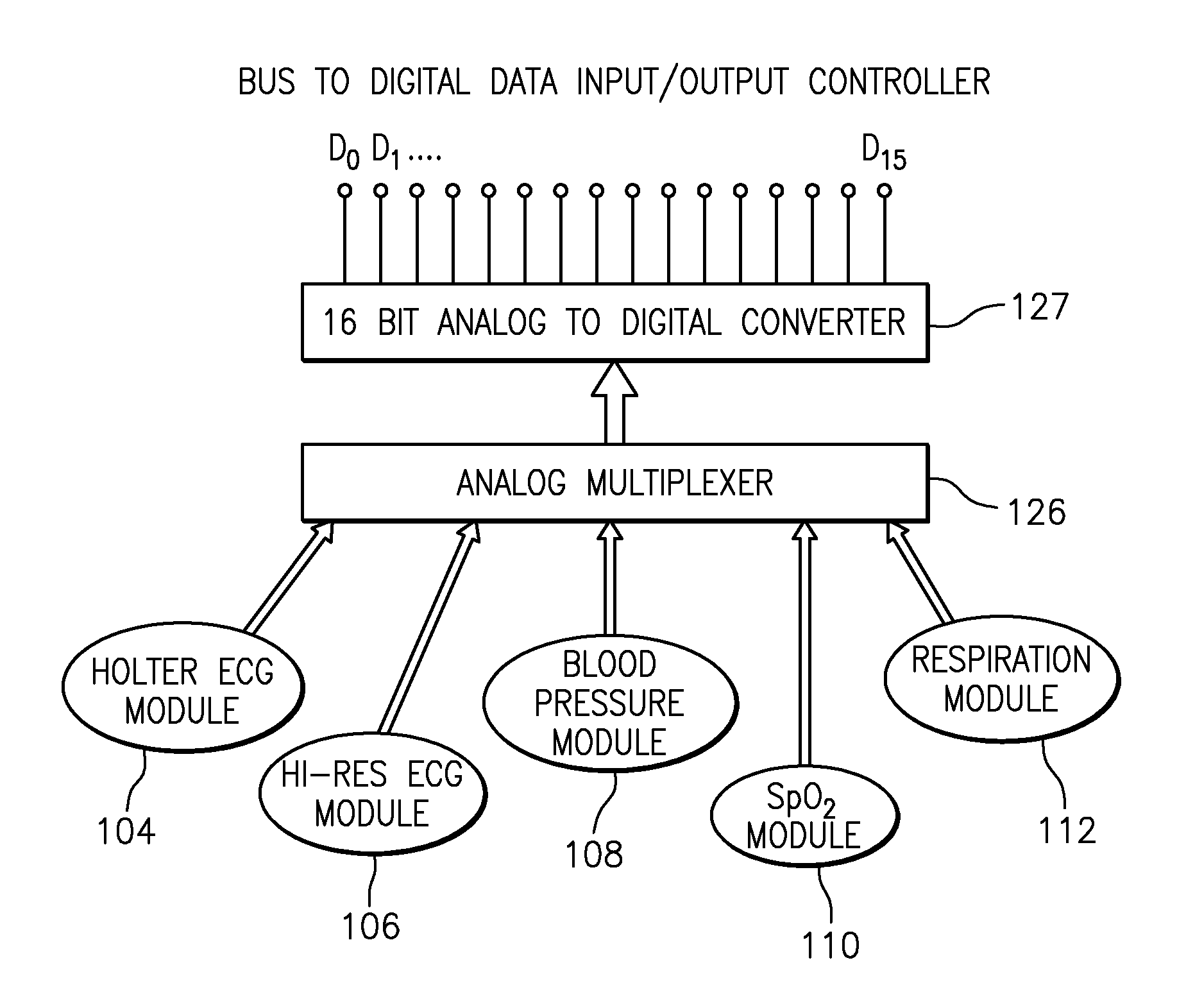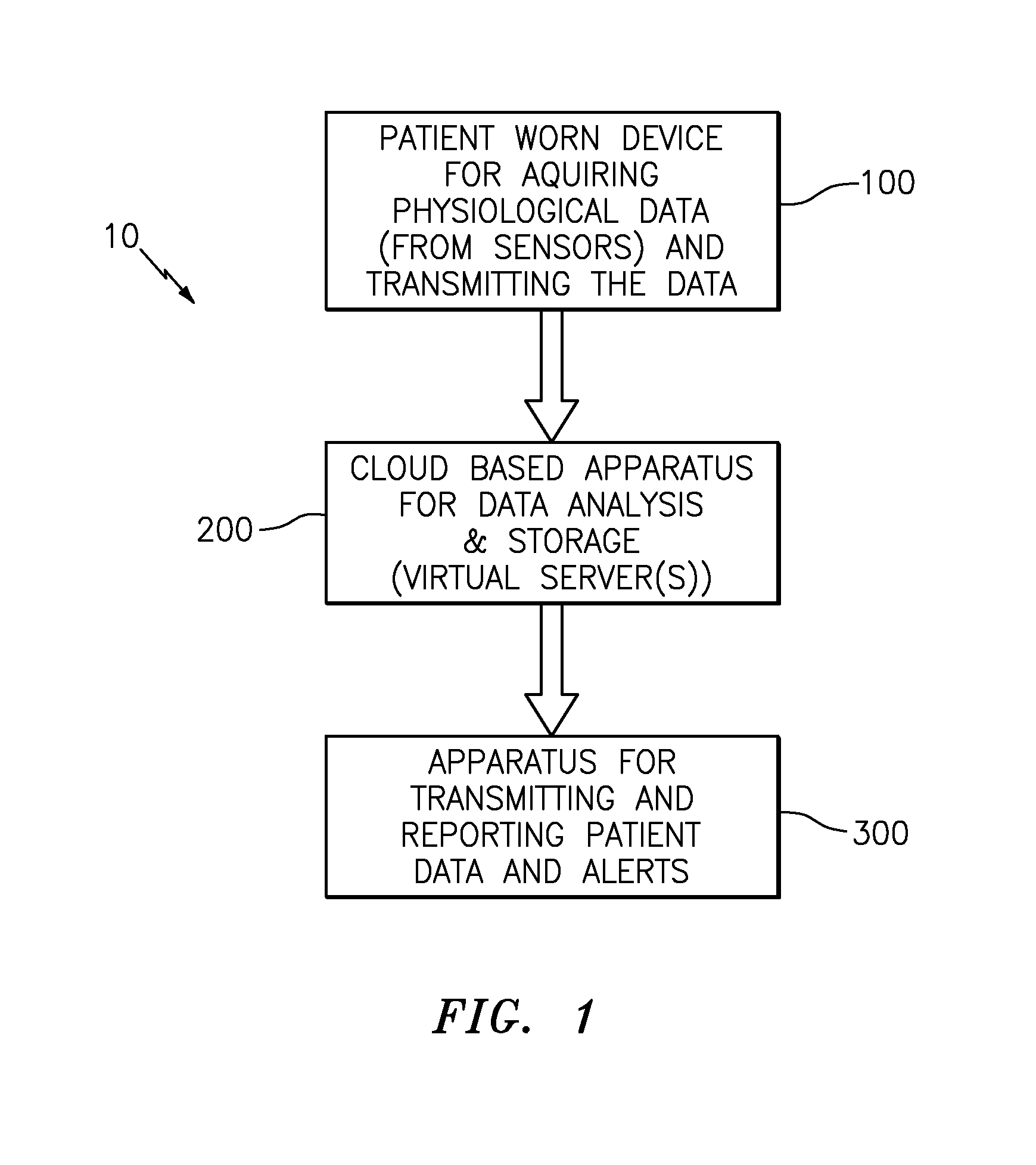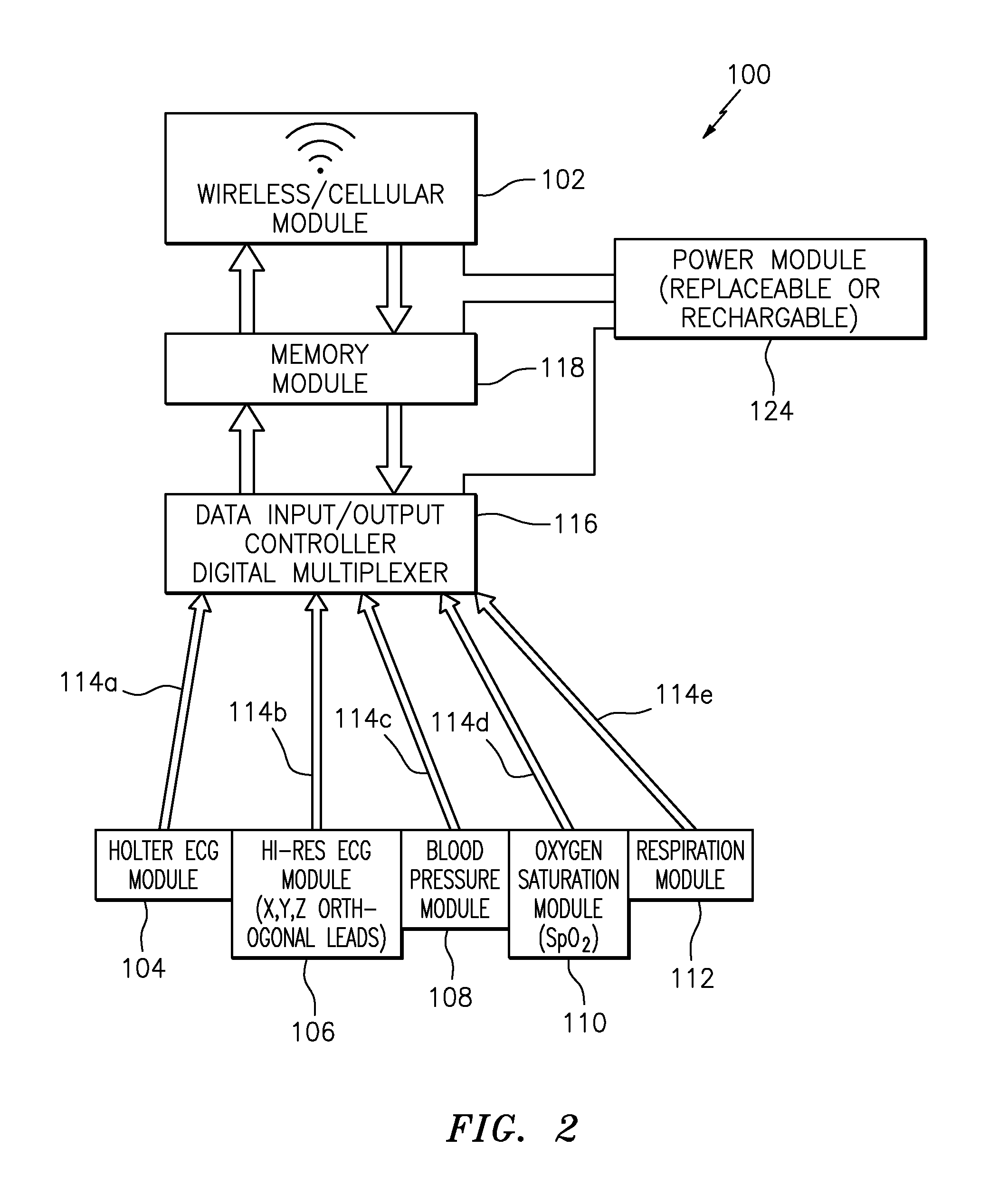Ambulatory physiological monitoring with remote analysis
a physiological monitoring and remote analysis technology, applied in the field of physiological data monitoring, can solve the problems of increasing the time needed to analyze the data, affecting the patient's health, so as to save the life of a heart patient, the effect of rapid automatic detection of changes and quick response tim
- Summary
- Abstract
- Description
- Claims
- Application Information
AI Technical Summary
Benefits of technology
Problems solved by technology
Method used
Image
Examples
Embodiment Construction
)
[0033]Referring to FIGS. 1-3 and 5-12, Applicants have disclosed a wireless apparatus (a.k.a. system) and method for remotely monitoring the physiological status of ambulatory patients by using one or more “cloud” servers. Remote processing of electrocardiograms (“ECG”) is achieved, in part, by streaming packet lengths of data acquired over no less than 3 seconds—which is typically equivalent to about 3 cardiac cycles (heartbeats)—and transmitting each packet individually immediately for processing (i.e., a split second after acquisition by a patient worn device) to provide the quickest response time by clinicians to try to save a heart patient's life.
[0034]As used herein, the term “clinician” refers to a physician or other qualified person who is involved in the treatment and observation of living patients, as distinguished from one engaged in research.
[0035]The cardiac cycle is the sequence of events that occurs when the heart beats. There are two phases of the cardiac cycle. In ...
PUM
 Login to View More
Login to View More Abstract
Description
Claims
Application Information
 Login to View More
Login to View More - R&D
- Intellectual Property
- Life Sciences
- Materials
- Tech Scout
- Unparalleled Data Quality
- Higher Quality Content
- 60% Fewer Hallucinations
Browse by: Latest US Patents, China's latest patents, Technical Efficacy Thesaurus, Application Domain, Technology Topic, Popular Technical Reports.
© 2025 PatSnap. All rights reserved.Legal|Privacy policy|Modern Slavery Act Transparency Statement|Sitemap|About US| Contact US: help@patsnap.com



